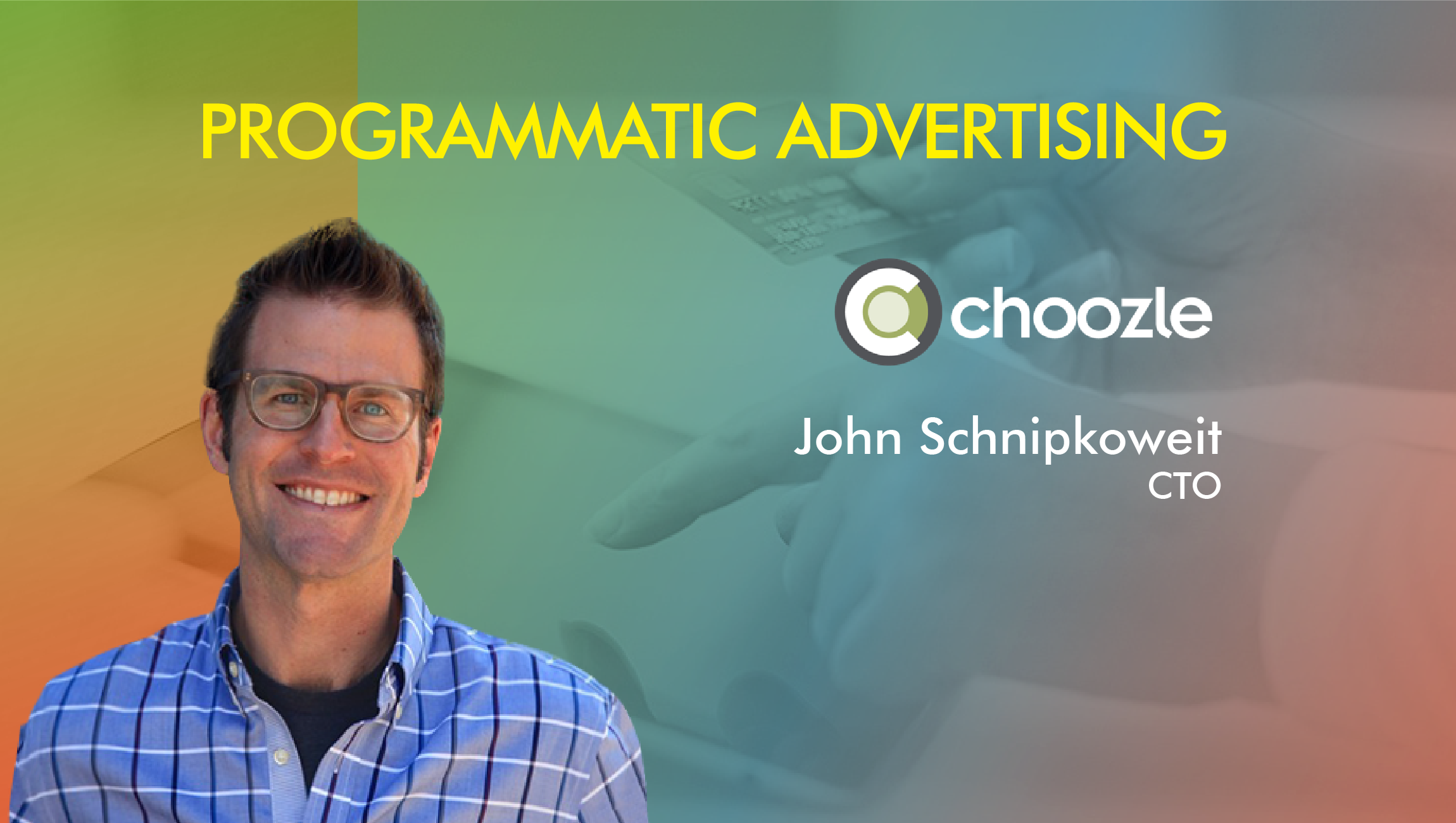John Schnipkoweit
CTO, Choozle
A smart blend between the native and programmatic advertising delivery can help in achieving the contemporary standards of multi-screen and mobile experiences. However, it’s not that easy to strike the balance between native and programmatic ad delivery. Choozle is a leading digital marketing technology platform that enables advertisers to achieve that balance. We spoke to Choozle’s CTO, John Schnipkoweit, to understand how should ad buyers choose between the native and programmatic technologies.
Html code here! Replace this with any non empty text and that's it.
Tell us about your role at Choozle and the technology you evangelize?
As Choozle’s first CTO, I’ve been able to work across the organization on scaling our product driven “operating system.” With a great foundation of product and people, it has been impressive to watch our process evolve over the past nine months, especially in the midst of rapid product innovation and growth in the development team. I’m a big believer in the principles of Calm Technology, LeanUX and Teal Organizations, which have all played a part in that evolution.
What were the biggest moments from 2017, in the tech ecosystem, that influenced your vision?
The evolution and momentum of Kubernetes (K8S) was a game changer for startups looking to scale DevOps. Kubernetes is an open-source platform for deployment, management, and orchestration of containerized applications. It was originally developed by Google, which leveraged more than 15 years of experience running applications in containers at massive scale. Kubernetes was then open-sourced and turned over to the community in 2014, and over the past two and a half years it has become one of the go-to solutions for distributed architecture. It has also been widely adopted by everyone from hobbyists and developers working on small projects to the biggest enterprise installations running billions of containers a week on thousands of coordinated virtual machines.
In 2017, we saw AWS, Oracle, Microsoft, VMWare and Pivotal all join the Cloud Native Computing Foundation – facilitating the opportunity for efficiencies and regulatory compliance, which previously would have been major system investments for companies going global.
What are your predictions for Digital Advertising and Mobile Targeting technologies?
As someone coming from outside the ecosystem, the middleware problem was evident on day one – one of the factors leading to the compression in the industry, with a focus on streamlining the supply chain and increasing transparency. Right now, the complexities of programmatic systems are getting in the way of agency traders and keeping them from doing what they do best—as well as distracting them from outcomes.
That’s going to change in 2018.
Streamlining will make it as straightforward to buy advertising on the open internet as it is to buy on Facebook—and bring more transparency and accountability to the process, which will mean better results for marketers. In today’s attention driven economy, dynamic audience development based on outcomes will be essential at any point in the marketing funnel. Brands that understand how to use their own data and third party data to do this well, will be embraced by consumers with deeper engagement and better outcomes.
How should ad buyers overcome the dilemma in choosing between Native and Programmatic technologies?
While some brands should consider a balance between both Native and Programmatic technologies, the latter functionality is advancing to provide similar results.
For instance, Choozle continues to explore integrations that provide our customers targeting options and placement that works more efficiently than how Native advertising is currently purchased. This includes advanced site placement targeting and environment and device optimizations.
How does a flexible ad buying platform integrate with an ABM/ CRM platform? What are the key features of a self-service integration between the two technologies?
Every CRM has different functionality that is used in unique ways by advertisers. As we’ve seen with the rise of Marketing Automation tools, flexibility and simplicity is key to helping accommodate those different workflows. While we’ve seen a lot of success in our CRM to audience asynchronous capability, I believe bi-directional syncing will be key as Marketing Automation tools mature for both B2B and B2C advertisers.
How do you see AI-enabled technologies making an impact on media tech collaboration platforms? How does Choozle prepare in this AI-powered ecosystem?
AI is great, but most companies talk more about their AI capability than they do about the problem they are solving. AI will never be able to replace the intuition and strategy that a marketer brings to a campaign, but it can be very powerful in identifying trends and statistical efficiencies to help marketers focus on the signal in the noise. In 2018, we’ll see AI as a way to amplify human ability, not a substitute for it.
Machines have plenty of advantages; they have the ability to consume, process, interpret and act upon large quantities of data faster than human minds are capable of. But we still need humans to create, adjust and feed data into the systems. Buyers can hand over more and more operational tasks to AI workhorses, allowing them to focus on measurement and refinement strategies—like using AI algorithms to dynamically score users to isolate high-likelihood converters—in real time.
Our relentless focus on a product-driven mindset – building products around solving problems, not around adding features – has positioned us very well, with some great solutions already being tested.
Thanks for chatting with us, John.
Stay tuned for more insights on marketing technologies. To participate in our Tech Bytes program, email us at news@martechseries-67ee47.ingress-bonde.easywp.com
Also Read: Interview with Jeff Finch and Andrew Fischer, Co-Founders, Choozle











